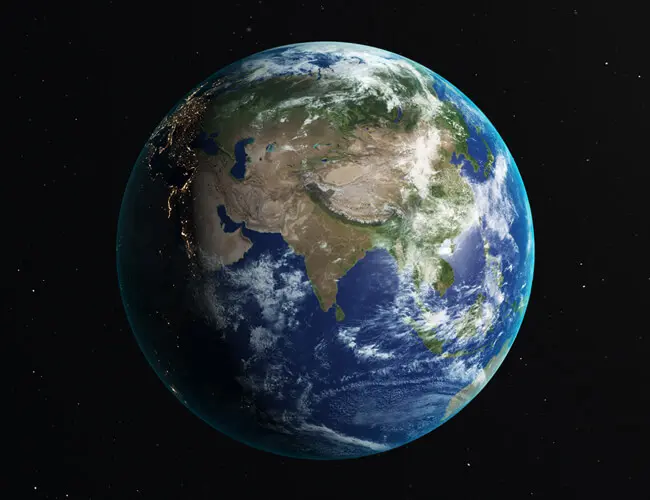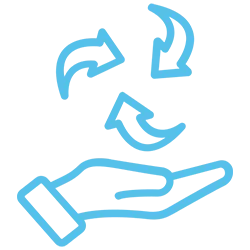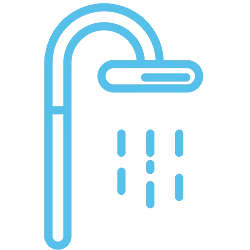WATER SOURCE OF LIFE –
Why water is so important and how we at camel active reduce the water consumption of our products.
Water is not only an elemental component of our ecosystem but also key to the existence of all life on our planet. Questions on why water is such a precious resource, why it is important to save water, how we at camel active reduce the water consumption of our products and support global water projects with a T-shirt and how you can also save water in everyday life, we will answer in this blog post.



WATER: OUR MOST VALUABLE RESOURCE
Water is a fascinating element and at the same time the most precious resource we have. It flows in rivers, lakes and oceans. It is home for countless living beings, regulates the climate and enables growth and reproduction. Without water, there would be no green forests, no blooming flowers, no life.
70 percent of the earth's surface is covered with water, but did you know that only about 3% of the world's water is freshwater? The increasing demand for water due to the growing world population, industrial development and climate change poses great challenges for us: It is our responsibility to protect and preserve water as a resource.
The Earth's water scarcity requires measures to reduce our water consumption and promote sustainable practices. At camel active, we therefore want to contribute our part to protecting the water resources of our planet and reduce the water consumption of our products. We’ll show you exactly how we do this and what impact the fashion industry actually has on global water consumption.
WHAT IMPACT DOES THE FASHION INDUSTRY HAVE
ON WATER CONSUMPTION?
The production of textiles requires water - that's no secret. Both in the cultivation of raw materials and in the processing and finishing of textiles. The water requirement is particularly high in the denim sector. Between 6,000 and 8,000 liters of water can be used to produce a pair of jeans, with the amount varying depending on the materials used, the country of cultivation and the manufacturing processes. The textile industry therefore has a major influence on global water consumption.
Through the further development of innovative technologies, the use of sustainable materials and efficient production processes as well as water-saving washing techniques, the industry has already been able to significantly reduce its water consumption. We at camel active also want to raise awareness of water as a precious resource and reduce the amount of water used in our products. How exactly? We'll show you now.
REDUCING WATER CONSUMPTION –
What we do at camel active
Since water is one of the most precious resources for us, we focus on resource-efficient production of our collection. We actively work to reduce the water consumption of our products and promote more sustainable practices. To achieve this, we rely on innovative and resource-efficient laser and ozone technologies as well as water-saving washing techniques.
In addition, we work with the EIM standard, a tool for measuring and evaluating the environmental impacts in the textile and fashion industry. But how exactly does the EIM standard work?
What is the EIM Standard
and what does it measure?
With the EIM standard, the so-called "Environmental Impact Measurement," it is possible to make sustainability measurable in the finishing process of textiles. Using the EIM score, we continuously monitor the water and energy consumption as well as the use of chemicals in our products.
The EIM Score also includes the work and health protection of employees in the production facilities. The assessment of the EIM standard is done in the form of a traffic light system, where the environmental impacts of production processes are categorized into three categories: green, yellow, and red.
We only use our Conscious Label when our products fall into the green or yellow categories, indicating a "low impact" or "medium impact" status. With this label, we declare forward-thinking production methods. We aim to demonstrate to you which items already employ sustainable production or innovative materials.



For which product groups do
we use the EIM standard?



As the production of jeans is water-intensive, the EIM standard is often used in the finishing of denim fabrics. We at camel active have also been working with the EIM standard for years and can thus reduce the water consumption of our jeans.
Compared to a conventional washing process, we can reduce water consumption during washing by approx. 57% when using the EIM standard. In the current Spring/Summer 24 collection, 97.5% of our collection has already achieved "low impact" or "medium impact" jeans status.
For the upcoming collections, we will extend the EIM standard to other product groups and also assess garment-dyed items with the EIM score.
Would you like to learn more about our sustainable and water-saving dyeing processes? Then stay tuned, subscribe to our newsletter, and be the first to know when our blog goes live.
.jpg)
©Melanie Haas
.jpg)
©Andrin Fretz
.jpg)
©Melanie Haas
TOGETHER FOR CLEAN DRINKING WATER –
camel active supports Viva con Agua
At camel active, we not only strive to reduce the water consumption of our products but also want to make this precious resource accessible to people all over the world. Because water is not only an elemental part of life - it is a human right. However, countless people worldwide suffer from water scarcity, the consequences of climate change and a lack of sanitation.

Would you also like to purchase a limited edition shirt?
With our Limited Edition T-shirt for World Water Day on March 22nd, we therefore support global water projects of the Viva con Agua association and thus contribute to providing clean drinking water to people all over the world.
WHAT CAN I DO TO SAVE WATER IN MY EVERYDAY LIFE?
Since the high water consumption in textile production has significant environmental impacts, it is our responsibility as a brand to protect and preserve water as a resource. But each of us can also contribute and help saving water in our everyday life. Here are 5 simple tips to reduce our personal water consumption:

1. Wash less:
Not every wear requires a wash. Therefore, air out clothes more often after use and consciously decide when a wash is really necessary. This way, we can not only save water but also extend the lifespan of our clothing.

2. Consume consciously:
By buying less, we can reduce our ecological footprint. When buying clothes, we should therefore focus on quality and durability. Also, choosing products made from sustainable materials and recycled fabrics can help reduce water consumption.

3. Repair & recycle:
Second-hand products and reparations are other ways to reduce water consumption. By recycling and upcycling clothes or repairing damaged parts, we extend their lifespan and thus reduce the need for new products. This in turn has a positive effect on water consumption, as fewer raw materials are required.

4. Shower instead of bath:
Showering generally uses less water than bathing. By opting for a short shower instead of a full bath, we can significantly reduce water consumption.

5. Rainwater harvesting for garden irrigation:
To water plants and flowers in the garden, we can collect rainwater in rain barrels. It is best to water the garden early in the morning or late in the evening to minimize evaporation losses. A little tip on top: Using mulch is great for retaining moisture in the soil.
On our care website you can also find lots of other helpful tips on how to care for and clean our products. Together, we can contribute not only to saving water but also to extending the lifecycle of our clothing. Click here to get directly to our Care Guide.
#makeanactivechange #watersourceoflife #vivaconagua #EIMStandard







.jpg)